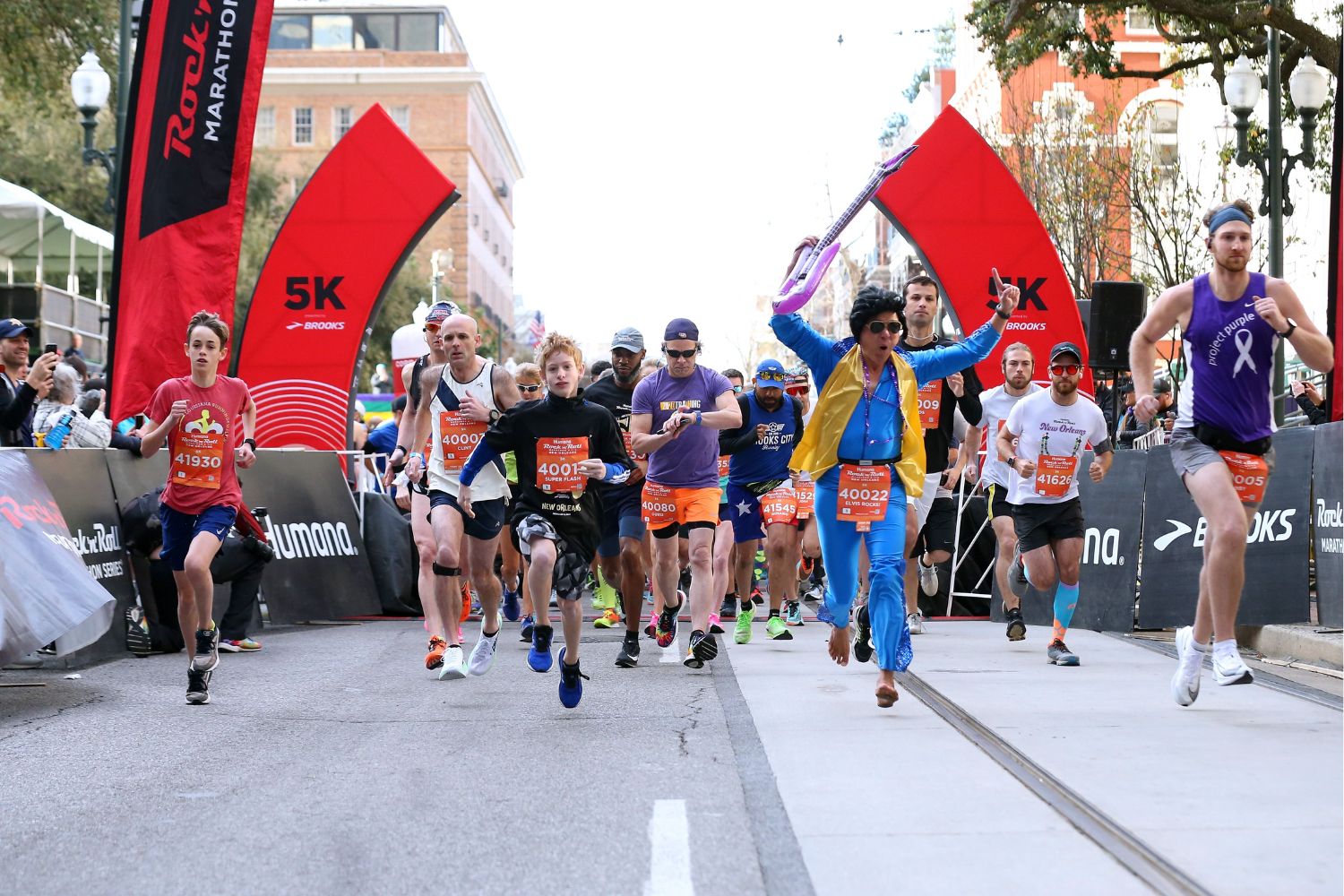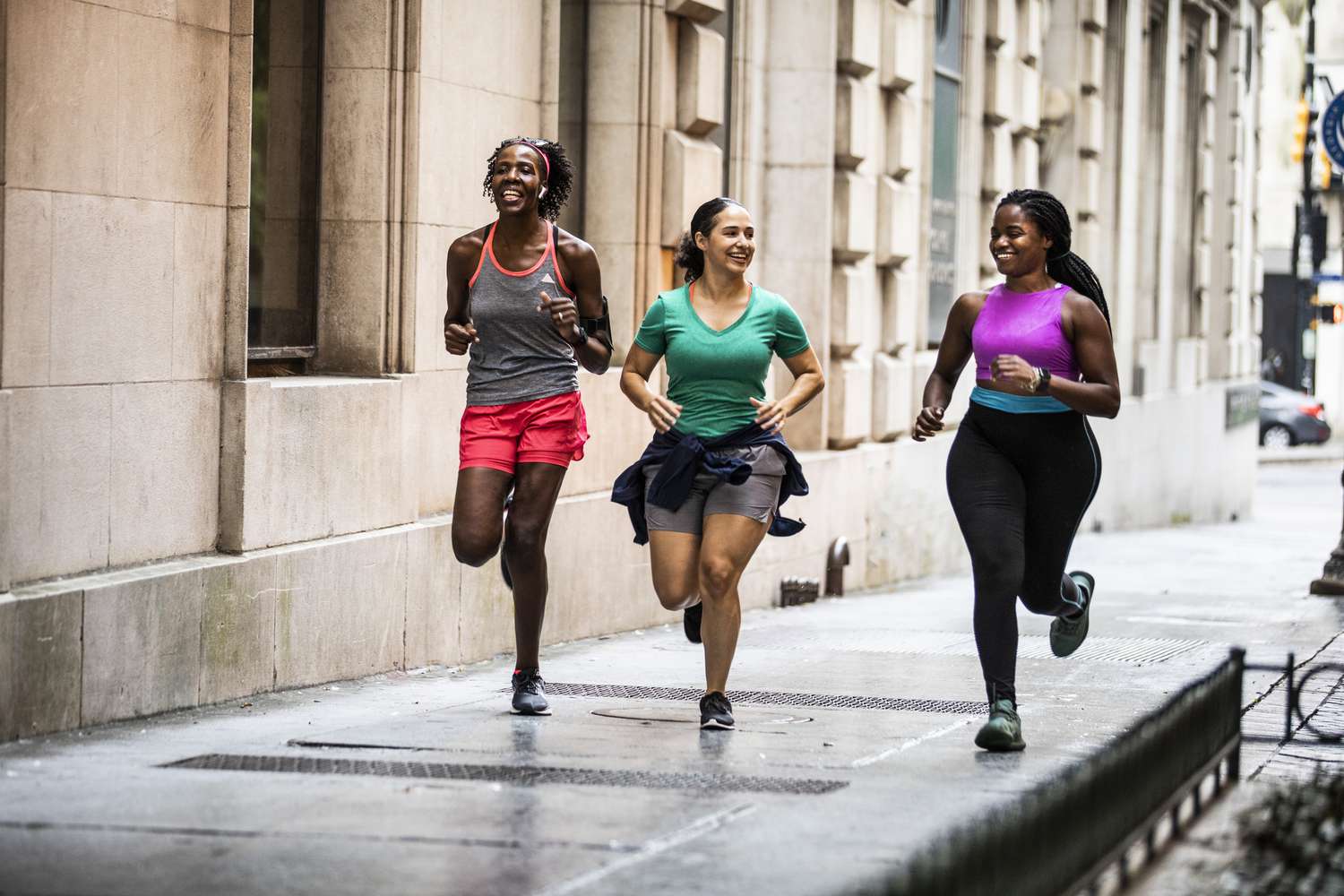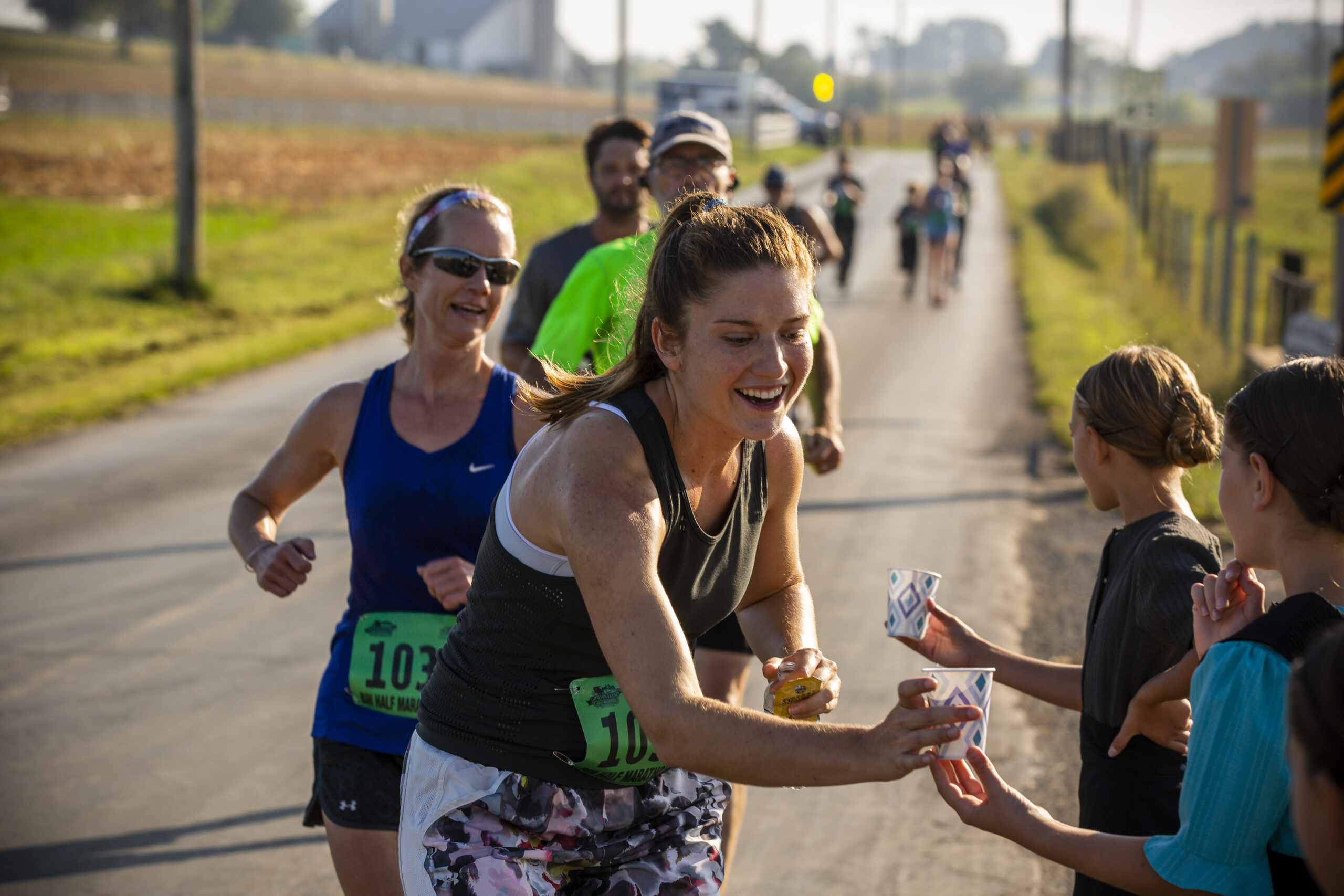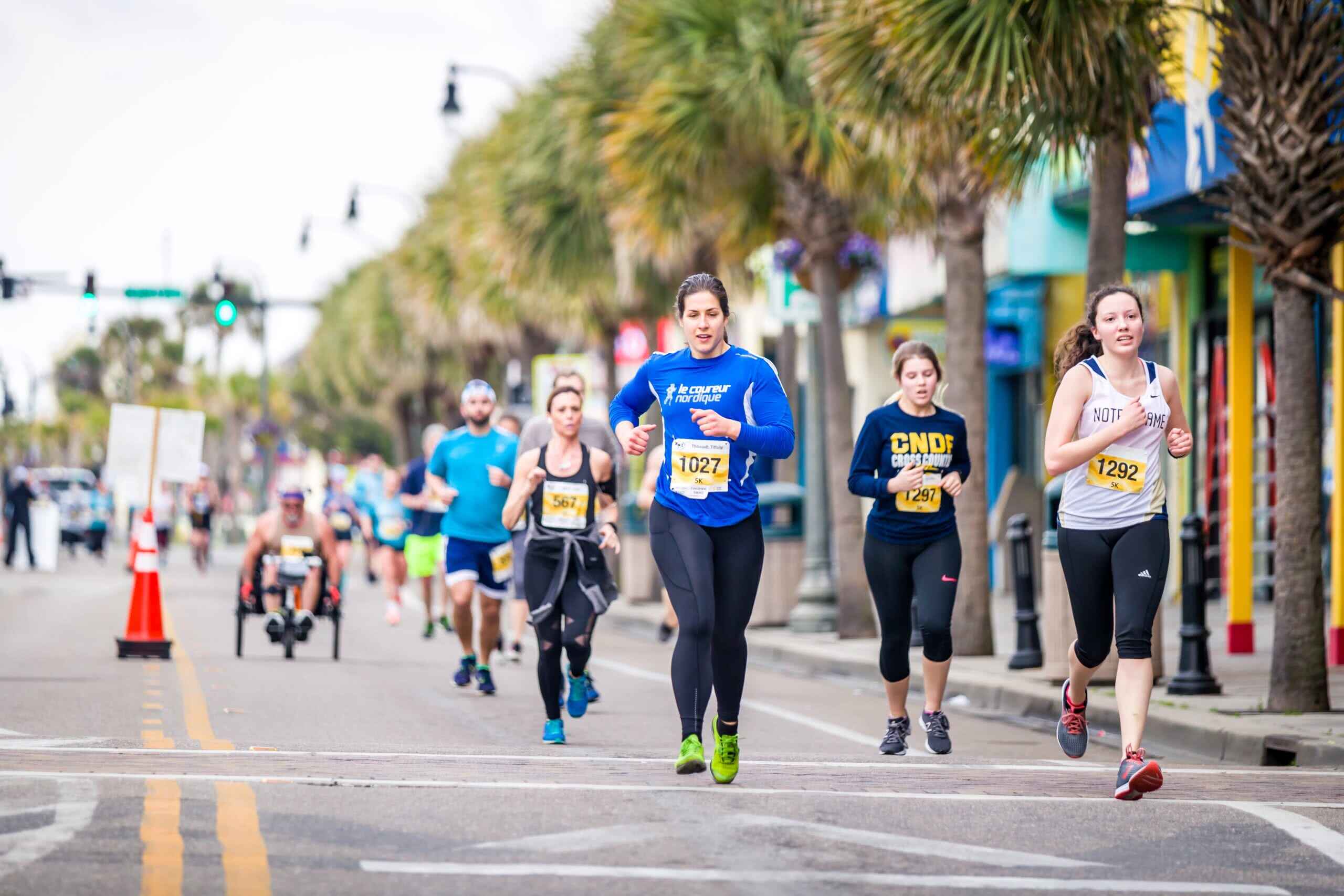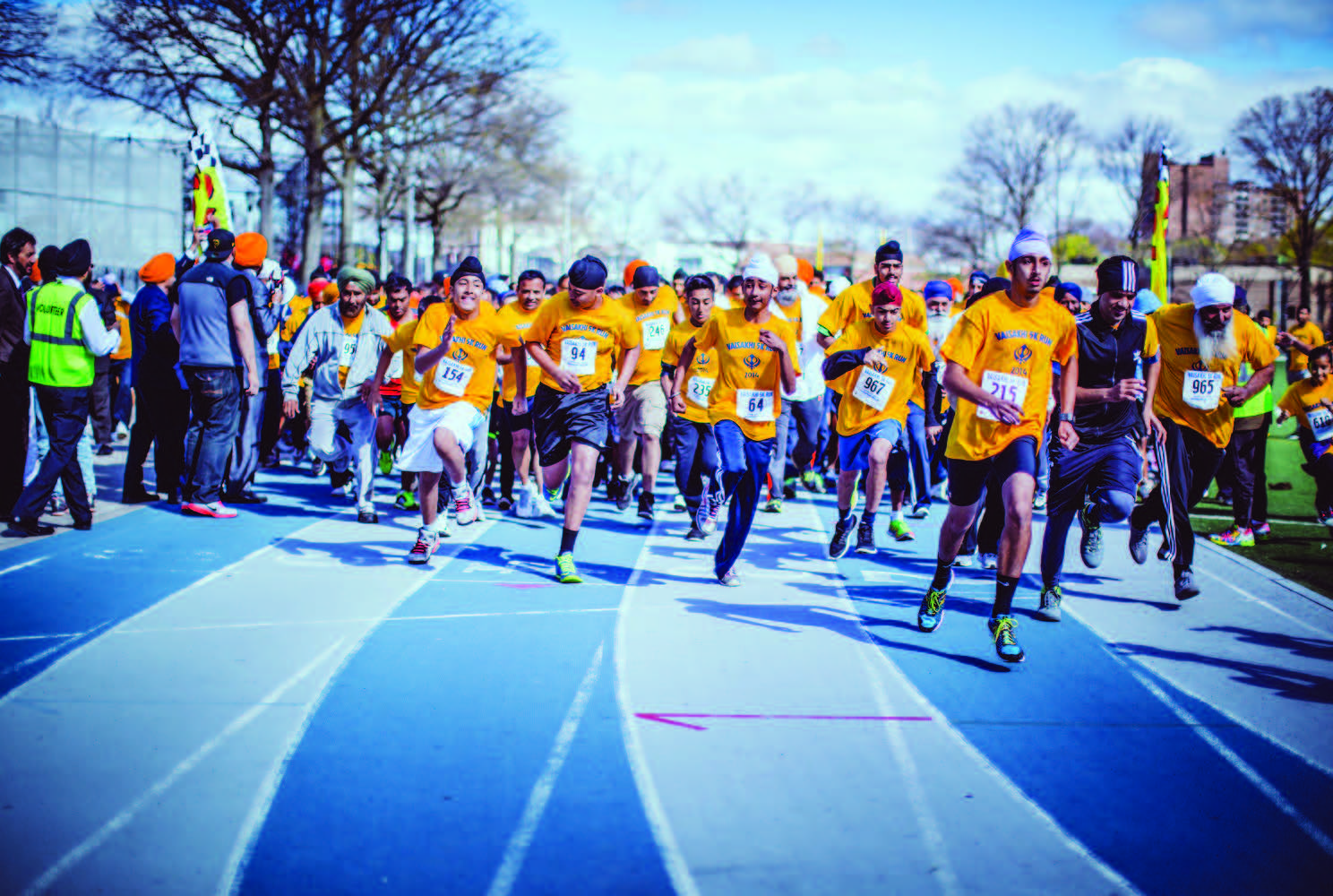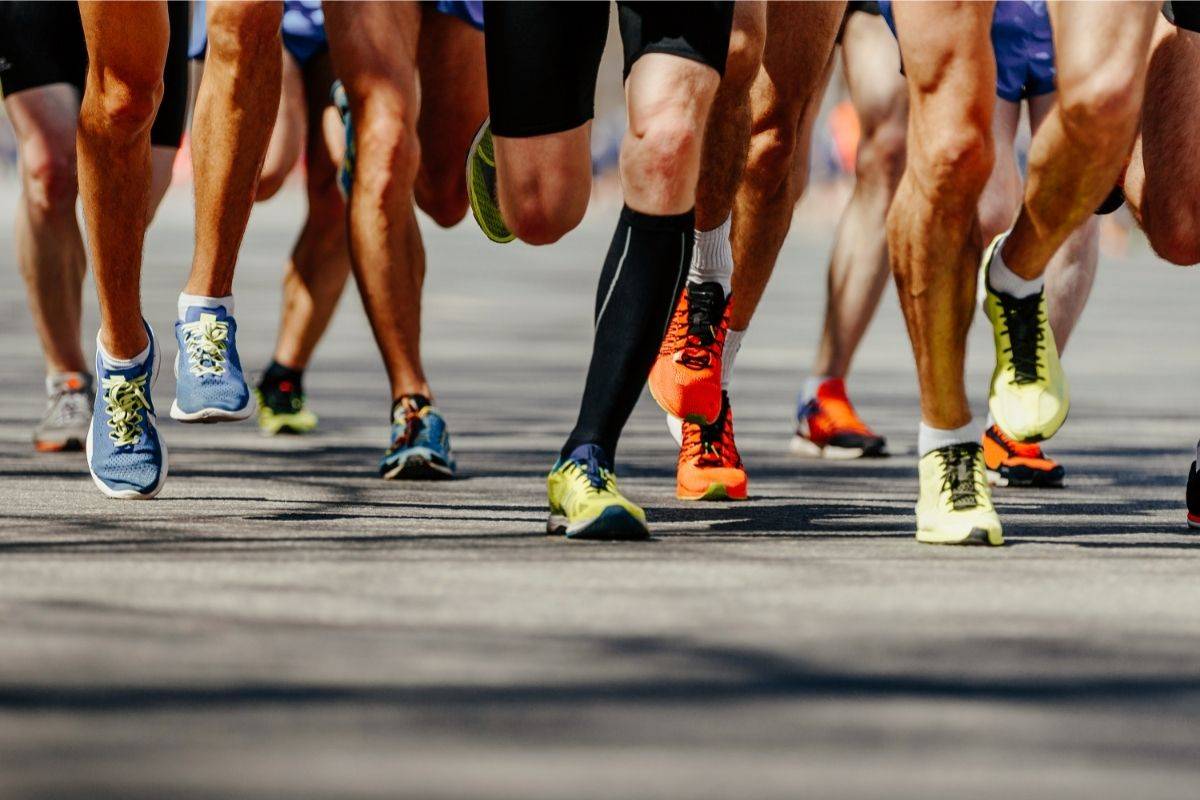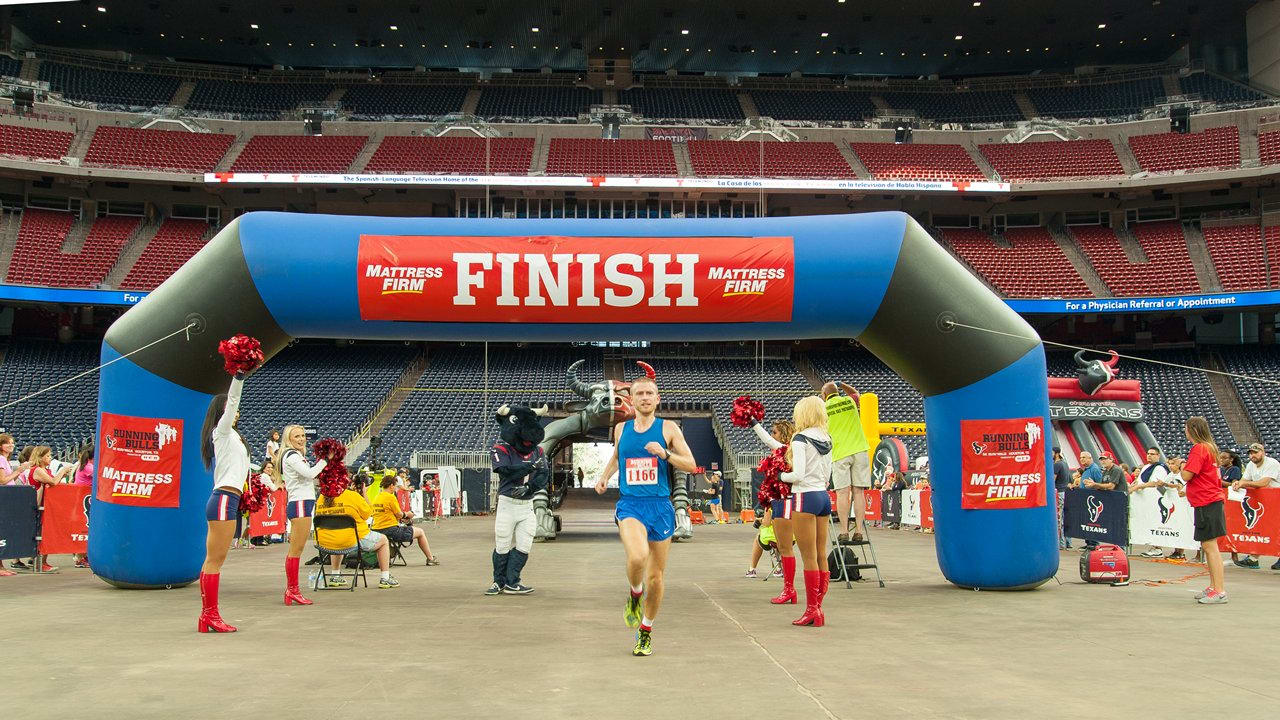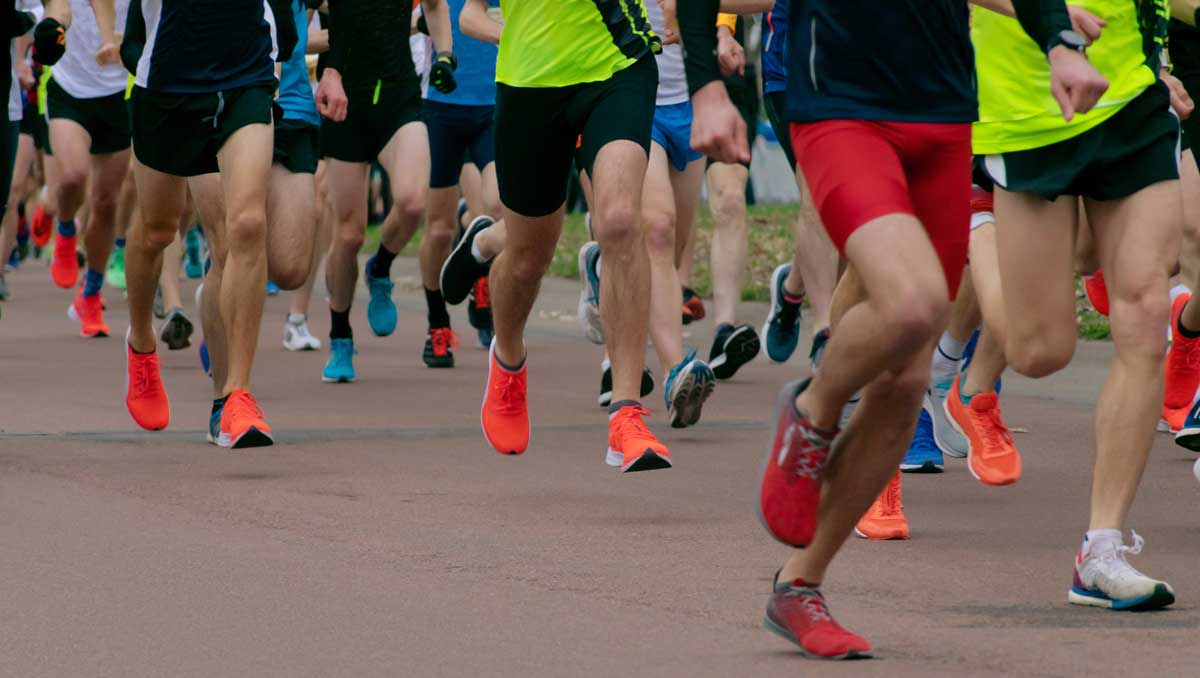

Featured
How To Get Ready For Your First 5K Run
Modified: January 2, 2024
Get ready for your first 5K run with our featured tips and advice. Start your training today and achieve your running goals
Introduction
Welcome to the world of running! Whether you are a complete beginner or have some experience with running, participating in your first 5K run can be an exciting and challenging endeavor. The journey to your first 5K is not just about the physical aspect of running; it’s also about mental preparation, goal-setting, and finding the right balance between pushing yourself and enjoying the process. This article will guide you through the essential steps to help you get ready for your first 5K run.
Running a 5K, which is equivalent to 3.1 miles, is a popular distance for beginners because it is a manageable distance that can be accomplished with the right training. It’s an excellent way to get into the habit of regular exercise and to set a tangible goal for yourself. Crossing that finish line can give you an incredible sense of accomplishment and can be the start of a lifelong love for running.
Before you lace up your running shoes and hit the pavement, it’s important to evaluate your current fitness level and set realistic goals. Are you a complete beginner looking to finish the race, or do you have a time goal in mind? Setting clear objectives will help you tailor your training plan accordingly and keep you motivated throughout the process.
In addition to setting goals, you’ll need to create a training schedule that gradually increases your mileage and builds your endurance over time. Consistency is key when it comes to training for a 5K run. By following a structured plan, you can avoid injuries and improve your overall performance.
Proper gear and equipment are essential for any runner, regardless of their experience level. Investing in a good pair of running shoes that provide proper support and fit comfortably is crucial to avoid discomfort and potential injuries. Additionally, wearing moisture-wicking clothing can help regulate your body temperature and keep you dry during your runs.
In the following sections, we’ll delve deeper into the specific steps you can take to prepare for your first 5K run. From proper running form and technique to injury prevention and recovery techniques, we’ll cover all the necessary aspects to ensure you have an enjoyable and successful race day.
`
`
Setting Your Goal
Before embarking on your 5K journey, it’s essential to set a clear and realistic goal. Your goal may vary depending on your fitness level, experience, and personal aspirations. It’s important to remember that your goal should be challenging yet achievable to keep you motivated throughout your training.
For some beginners, completing the 5K without walking may be the primary goal. It’s a fantastic milestone that marks your commitment and progress. If you’re already comfortable with running and have some experience under your belt, you may aim for a specific time goal to push your boundaries. Setting a time goal can add an extra level of motivation and excitement to your training process.
When setting your goal, consider your current fitness level, any previous running experience, and the time frame you have to prepare for the race. Be honest with yourself about your capabilities and limitations. Setting an unrealistic goal can lead to disappointment or even injuries.
Once you’ve determined your goal, write it down and keep it somewhere visible. This visual reminder will serve as a constant source of motivation during your training. Whether it’s on a post-it note on your fridge or a digital reminder on your phone, seeing your goal regularly will keep you focused and committed.
In addition to the primary goal of completing the 5K or achieving a specific time, consider setting smaller milestones along the way. Breaking down your goal into manageable chunks will help you stay motivated and provide a sense of accomplishment as you progress.
For instance, you can set weekly mileage targets or time goals for specific training runs. These mini-goals allow you to track your progress and provide a sense of achievement even before the main event. Celebrate every milestone you achieve, no matter how small, to keep your motivation levels high.
Remember, setting a goal is not only about the end result but also about the journey. Embrace the process, enjoy the training runs, and celebrate the progress you make along the way.
`
`
Creating a Training Schedule
Creating a structured training schedule is essential to prepare your body for the upcoming 5K run. A well-designed plan will gradually increase your mileage and build your endurance over time, reducing the risk of injuries and improving your overall performance.
When developing your training schedule, consider both the time frame you have until race day and your current fitness level. If you’re a beginner, it’s important to start with a plan that gradually introduces you to running and allows your body to adapt to the new demands. On the other hand, if you have some running experience, you can focus on more specific workouts, such as interval training and long runs, to improve your speed and endurance.
A typical training schedule for a 5K run spans around 8-12 weeks, depending on your fitness level and the amount of time you can commit to training each week. It’s recommended to include a mix of running and cross-training activities to help prevent overuse injuries and provide variety in your workouts.
A good starting point is to run three to four times a week, with a combination of easy runs, speed workouts, and a long run. Easy runs should make up the majority of your training, allowing your body to recover and adapt. Speed workouts, such as interval or fartlek sessions, help improve your cardiovascular fitness and increase your running speed. Long runs, gradually increasing in distance, build your endurance and mental strength.
Make sure to include rest days in your training schedule to allow your body ample time to recover and prevent burnout. These days provide an opportunity to focus on stretching, foam rolling, or engaging in low-impact activities like yoga or swimming.
Flexibility is key when it comes to your training schedule. Be prepared to adjust it as needed based on how your body responds to the workouts. Listen to your body and make modifications if you feel excessively fatigued or experience pain or discomfort. It’s better to rest and recover than to push through and risk injury.
Keep track of your training progress by logging your runs, mileage, and any additional notes or observations. This record will not only help you stay accountable but also allow you to reflect on your improvements and make adjustments to your training plan as necessary.
In the next section, we will discuss the importance of choosing the right gear and equipment for your 5K run.
`
`
Choosing the Right Gear and Equipment
When it comes to running, having the right gear and equipment can significantly impact your comfort, performance, and overall experience. Here are some key factors to consider when choosing the gear for your first 5K run.
Running Shoes: The most important piece of equipment for any runner is a good pair of running shoes. Invest in a pair that provides proper support, cushioning, and a comfortable fit. Look for shoes designed specifically for running to ensure they have the necessary features to support your feet and absorb impact.
Visit a specialty running store or get a professional fitting to find the right pair for your feet. They can analyze your gait and help determine the appropriate level of support needed. It’s worth trying on multiple pairs and going for a short run in them to ensure they feel comfortable and supportive.
Moisture-Wicking Clothing: When it comes to choosing clothing, opt for moisture-wicking fabrics that help keep you dry by pulling sweat away from your skin. Look for breathable materials that allow for better airflow and temperature control during your runs. Dress appropriately for the weather conditions, considering factors such as temperature, wind, and rain.
Socks: Don’t underestimate the importance of good running socks. Look for socks made of moisture-wicking materials that reduce friction, prevent blisters, and provide extra cushioning where needed. Having a comfortable and supportive pair of socks can make a significant difference in your overall comfort during your 5K run.
GPS Watch or Smartphone App: While not necessary, a GPS watch or a smartphone app with a running tracker can be beneficial. It allows you to track your distance, pace, and time, helping you monitor your progress and stay on track with your training goals. These devices also often offer features such as heart rate monitoring and interval training timers.
Reflective Gear and Visibility: If you plan on running early in the morning or in low-light conditions, it’s important to prioritize visibility and safety. Invest in reflective gear, such as vests, armbands, or jackets, to make yourself visible to motorists and other pedestrians. Additionally, consider adding a headlamp or a flashing light to increase your visibility.
Optional Extras: Depending on your preferences and needs, you may want to consider other accessories such as a running belt or a hydration pack to carry essentials like keys, phone, water, or energy gels. These accessories can make your runs more convenient and comfortable, but they are not essential for your first 5K run.
Remember, the right gear and equipment can enhance your running experience, but the most important thing is to find what works best for you. Experiment with different options, take note of what feels comfortable and supportive, and make adjustments as needed.
Next, we will discuss the importance of maintaining proper running form and technique for optimal performance.
`
Proper Running Form and Technique
Having proper running form and technique is crucial for maximizing efficiency, preventing injuries, and achieving optimal performance during your first 5K run. Here are some key tips to help you maintain proper form throughout your training:
Posture: Keep your head up, eyes forward, and shoulders relaxed. Avoid slouching or hunching over as this can restrict your breathing and lead to unnecessary strain on your neck and back.
Arm Swing: Maintain a relaxed and controlled arm swing. Your arms should be bent at a 90-degree angle and swing naturally forward and backward, not across your body. Avoid crossing your arms in front of your chest, as it can negatively impact your form and balance.
Stride Length and Cadence: Aim for a comfortable stride length that isn’t too long or too short. Overstriding (taking excessively long steps) can increase the risk of injury, while a stride that’s too short can be inefficient. Also, focus on maintaining a quick cadence (the number of steps you take per minute), ideally around 180 steps per minute. A higher cadence reduces the chances of overstriding and puts less stress on your joints.
Footstrike: Aim for a midfoot or forefoot strike rather than a heel strike. Landing on the middle or front of your foot helps to absorb shock better and promotes a more efficient stride. Avoid overstriding and landing with your heel first, as it can result in a braking motion and increase the risk of impact-related injuries.
Breathing: Establish a rhythm of deep, controlled breathing. Breathe in through your nose and out through your mouth to bring in more oxygen and expel carbon dioxide effectively. Everyone has a different breathing pattern, so find what works best for you and strive for a natural and comfortable rhythm.
Core Engagement: Engage your core muscles by lightly contracting your abdominal muscles and maintaining a stable torso. A strong core helps to support your posture, maintain balance, and reduce unnecessary strain on your back and hips.
Listen to Your Body: Pay attention to any signs of pain, discomfort, or imbalance during your runs. If something doesn’t feel right, make adjustments as needed. It’s important to be mindful of your body’s cues and avoid pushing through pain or persisting with poor form.
Remember that it takes time and practice to develop proper running form and technique. Be patient with yourself and focus on making gradual improvements. Incorporating drills and exercises that target specific aspects of running form, such as strides or footwork drills, can also be beneficial.
In the next section, we’ll discuss the importance of incorporating warm-up and cool-down exercises into your training routine.
Warm-Up and Cool-Down Exercises
Properly warming up before your 5K run and cooling down afterward is essential for preparing your body for the demands of the race and aiding in recovery. Here are some warm-up and cool-down exercises you should incorporate into your training routine:
Warm-Up:
Before you start running, spend 5-10 minutes engaging in dynamic stretches and exercises to gradually increase your heart rate and warm up your muscles. Some effective warm-up exercises include:
- Marching or jogging in place
- Leg swings: Stand next to a wall or support and swing one leg forward and backward, then side to side, aiming for full range of motion
- Arm circles: Stand with your feet shoulder-width apart and extend your arms out to the sides. Make small circles with your arms, gradually increasing the size of the circles
- Walking lunges: Take long strides and lower your body into a lunge position, alternating legs
- High knees: Run slowly in place, lifting your knees as high as possible with each step
These exercises will increase blood flow to your muscles, increase your range of motion, and prepare your body for the running ahead.
Cool-Down:
After completing your 5K run or training session, allow your body to gradually cool down and recover by performing some gentle, static stretches. Hold each stretch for 20-30 seconds, without bouncing or straining. Focus on stretching the major muscle groups in your legs, hips, back, and shoulders. Some effective cool-down stretches include:
- Quad stretch: Stand tall and grab your ankle, pulling it towards your glutes while keeping your knees close together
- Seated hamstring stretch: Sit on the ground with your legs extended in front of you, bend one leg at the knee, and reach for your toes on the extended leg
- Standing calf stretch: Place one foot behind you, keeping the leg straight, and gently lean forward to stretch your calf
- Shoulder stretch: Stretch your arm across your chest and hold it in place with your other arm, feeling a stretch in your shoulder
Cooling down with these stretches will help prevent muscle soreness and stiffness, improve flexibility, and promote better recovery from your training sessions.
Remember, the warm-up and cool-down exercises are just as important as the actual running itself. By incorporating these exercises into your routine, you’ll reduce the risk of injury, enhance your performance, and accelerate your recovery process.
In the next section, we will discuss strategies to build endurance and stamina for your 5K run.
Building Endurance and Stamina
Building endurance and stamina is crucial for successfully completing your first 5K run. As a beginner, it’s important to gradually increase your mileage and training intensity to improve your cardiovascular fitness and muscular endurance. Here are some strategies to help you build endurance and stamina:
Start Slow and Build Gradually: Begin your training with a combination of walking and running. As your fitness level improves, slowly increase the amount of time you spend running and decrease the walking intervals. Listen to your body and progress at a pace that feels comfortable for you.
Increase Mileage and Time: Each week, aim to add a little more distance or time to your runs, gradually building up your endurance. Start by adding an extra 5-10 minutes to your long run each week, or increasing your overall mileage by about 10%. This gradual increase will allow your body to adapt and prevent overuse injuries.
Interval Training: Incorporate interval training into your routine to improve your cardiovascular fitness and increase your running speed. Alternate between periods of high-intensity running and recovery periods of slower jogging or walking. For example, sprint for 1 minute and then recover with a 2-minute jog, repeating this cycle several times in one workout.
Hill Repeats: Find a hill in your training area and incorporate hill repeats into your workouts. Running uphill strengthens your leg muscles and improves your cardiovascular fitness. Start with shorter hill repeats and gradually increase the number and length of the repeats as your fitness improves.
Long Runs: Once a week, include a longer run in your training schedule. Gradually increase the distance of your long runs, extending them by about 10% each week. The long run builds endurance and mental toughness, preparing you for the distance of the 5K race.
Consistency is Key: Consistency is crucial for building endurance and stamina. Stick to your training schedule and make running a regular part of your routine. Even if your runs are shorter or slower on some days, maintaining consistency will help you progress and improve over time.
Rest and Recovery: Allow your body time to recover between training sessions. Rest days are just as important as the running days. Resting helps your muscles repair and rebuild, reducing the risk of overuse injuries. Include at least one or two rest days in your training schedule each week.
Remember, building endurance and stamina takes time and patience. Be mindful of your body’s limits and progress gradually. Don’t push yourself too hard, too quickly, as it can lead to injury or burnout. Celebrate each milestone along the way and recognize the improvements in your endurance and stamina as you work towards your goal.
In the next section, we’ll dive into the importance of incorporating strength training exercises into your training routine for a more balanced and injury-resistant body.
Strength Training for Runners
While running is the foundation of your 5K training, incorporating strength training exercises into your routine is essential for building a well-rounded and injury-resistant body. Here’s why strength training is important for runners and how you can integrate it into your training plan:
Improved Running Economy: Strength training helps improve your running economy, which is the ability to maintain efficient and economical running form. By strengthening key muscles used in running, such as your glutes, hips, and core, you’ll be able to maintain proper form for longer distances, resulting in better overall performance.
Injury Prevention: Strength training helps strengthen the muscles, tendons, and ligaments that support your joints, reducing the risk of common running injuries. Exercises that target the hips, knees, and ankles, such as squats, lunges, and calf raises, can help stabilize these areas and prevent injury.
Increased Power and Speed: Building strength can improve your power and speed, allowing you to generate more force with each stride. Explosive exercises like plyometrics and power cleans can help enhance your running performance and sprinting abilities.
Overall Body Balance: Running is a repetitive motion that primarily works the lower body. Incorporating strength training exercises for your upper body, such as push-ups, rows, and shoulder presses, helps create a more balanced physique and reduces the risk of muscle imbalances.
Flexibility and Mobility: Strength training can improve your range of motion and flexibility, enabling you to achieve better running mechanics and reduce the risk of muscle tightness and imbalances. Integrating exercises that target flexibility, such as yoga or dynamic stretching, can be beneficial for runners.
When incorporating strength training into your routine, aim for 2-3 sessions per week, dedicating specific days to focus on different muscle groups. Here are some essential exercises to include:
- Lower Body: Squats, lunges, step-ups, deadlifts, calf raises
- Upper Body: Push-ups, pull-ups, rows, overhead presses
- Core: Planks, Russian twists, bicycle crunches, bridges
- Plyometrics: Jumping lunges, box jumps, medicine ball slams
- Flexibility: Yoga, dynamic stretching, foam rolling
Start with lighter weights or bodyweight exercises and gradually increase the intensity as you become more comfortable and stronger. Focus on maintaining proper form and technique throughout each exercise.
It’s important to note that strength training should complement your running training, not replace it. Be mindful of the balance between the two and ensure you have adequate rest days for recovery.
Incorporating strength training into your routine will not only enhance your running performance but also promote injury prevention and overall body strength. It’s an integral part of a well-rounded training program for your first 5K run.
In the next section, we’ll discuss strategies for injury prevention and recovery to keep you healthy and on track during your training.
Injury Prevention and Recovery Techniques
When training for your first 5K run, it’s essential to prioritize injury prevention and practice proper recovery techniques. Here are some strategies to help you stay healthy and recover effectively:
Listen to Your Body: Pay attention to any signs of pain, discomfort, or fatigue during your training. Pushing through pain can worsen an injury, so it’s crucial to listen to your body and rest when needed. If you experience persistent pain or a new injury, consult a healthcare professional.
Gradual Progression: Avoid sudden increases in training volume or intensity, as it can lead to overuse injuries. Gradually progress your mileage, speed, and intensity to allow your body to adapt and handle the demands of running. Follow your training plan and avoid the temptation to do too much, too soon.
Proper Warm-Up and Cool-Down: Start each workout with a dynamic warm-up to prepare your muscles and increase blood flow. Afterward, cool down with static stretches to maintain flexibility and aid in recovery.
Rest and Recovery: Include rest days in your training schedule to allow your body time to recover and heal. Rest days are just as important as training days. Use these days to engage in active recovery activities like gentle stretching, foam rolling, or low-impact cross-training exercises.
Cross-Training: Incorporate other low-impact activities into your training routine, such as swimming, cycling, or yoga. Cross-training helps improve endurance, strengthen different muscle groups, and reduce the risk of overuse injuries.
Strength Training: As mentioned in the previous section, strength training is essential for injury prevention. Strengthening the muscles that support your running can help absorb impact and reduce the risk of common running injuries.
Proper Nutrition: Maintain a balanced diet that provides the necessary nutrients to support your training. Focus on consuming a variety of whole foods, including lean proteins, fruits, vegetables, whole grains, and healthy fats. Stay hydrated by drinking plenty of water throughout the day and during your runs.
Quality Sleep: A good night’s sleep is vital for recovery and overall well-being. Aim for 7-8 hours of quality sleep each night to allow your body to repair and regenerate tissues, boost immune function, and support cognitive function.
Manage Stress: Chronic stress can hinder recovery and increase the risk of injury. Find ways to manage stress through activities like deep breathing exercises, meditation, or engaging in hobbies that help you relax and unwind.
Seek Professional Help: If you experience recurring or severe pain, don’t hesitate to consult with a healthcare professional or a sports medicine specialist. They can provide expert guidance and advice tailored to your specific needs.
By practicing injury prevention techniques and prioritizing recovery, you’ll be able to avoid setbacks and stay on track with your training for your first 5K run.
In the next section, we’ll discuss the importance of proper nutrition and hydration for optimal performance during your race.
Proper Nutrition and Hydration Tips
Proper nutrition and hydration are vital aspects of your training and performance during your first 5K run. Fueling your body with the right nutrients and staying hydrated will help optimize your energy levels, enhance your endurance, and support overall well-being. Here are some tips to ensure proper nutrition and hydration:
Balance Your Macronutrients: Focus on getting a good balance of carbohydrates, proteins, and fats in your diet. Carbohydrates provide the primary fuel source for running, so include complex carbohydrates like whole grains, fruits, and vegetables in your meals. Lean proteins, such as chicken, fish, beans, and tofu, help repair and rebuild muscles. Healthy fats from sources like avocados, nuts, and olive oil provide long-lasting, sustained energy.
Pre-Run Nutrition: Eat a light, balanced meal containing carbohydrates, protein, and a small amount of healthy fats 2-3 hours before your run. This will provide sufficient energy and prevent discomfort during your run. If you’re running early in the morning, opt for a small snack like a banana or a piece of toast with nut butter.
During-Run Hydration: Staying hydrated during your run is essential. Sip on water or a sports drink throughout your run, especially if it’s longer than 30 minutes. Experiment with hydration strategies during your training to find what works best for you. Consider carrying a handheld water bottle or using a hydration belt for longer runs.
Post-Run Recovery: Consuming a post-run meal containing protein and carbohydrates within 30-60 minutes of completing your run helps replenish glycogen stores and aids in muscle recovery. Aim for a balanced meal or a snack like a protein smoothie with fruit, yogurt, and a scoop of protein powder.
Electrolyte Balance: Electrolytes, such as sodium, potassium, and magnesium, play a crucial role in hydration and muscle function. Sports drinks or electrolyte supplements can be beneficial for longer duration runs or in hot and humid conditions to replace lost electrolytes.
Listen to Your Body: Pay attention to your body’s hunger and thirst cues. Everybody is different, so it’s essential to tune in and adjust your nutritional needs accordingly. Eat when you’re hungry and drink when you’re thirsty to ensure proper fueling and hydration.
Nutrient Timing: Distribute your meals and snacks throughout the day to maintain steady energy levels. Aim for 3-4 small, balanced meals and incorporate healthy snacks for sustained fueling. This approach helps prevent energy crashes and provides a constant supply of nutrients.
Experiment and Adapt: Nutrition and hydration requirements can vary from person to person. Experiment with different foods, drinks, and timing during your training to understand what works best for your body. Take note of how you feel during runs and make adjustments as needed. Consider consulting with a registered dietitian or sports nutritionist for personalized guidance.
Remember, proper nutrition and hydration are not only crucial during your training but also on race day. Practice your nutrition and hydration strategies during your training runs to ensure you have a plan in place for race day.
In the next section, we’ll explore the importance of mental preparation and motivation for a successful 5K run.
Mental Preparation and Motivation
While physical training is essential for your first 5K run, mental preparation and motivation play a crucial role in your success on race day. Here are some strategies to help you cultivate a positive mindset and stay motivated:
Set a Clear Goal: Start by setting a clear and specific goal for your 5K run. Whether it’s finishing the race, achieving a target time, or simply enjoying the experience, having a goal gives you something to work towards and keeps you motivated throughout your training.
Visualize Success: Visualize yourself crossing the finish line, feeling strong and accomplished. Imagine the exhilaration and pride you’ll experience as you complete the race. This mental imagery can help strengthen your belief in your abilities and provide motivation during challenging moments.
Develop a Mantra: Create a personal mantra or positive affirmation to repeat to yourself during runs or when facing moments of doubt. It could be as simple as “I am strong” or “I can do this.” Repeat your mantra to reinforce positive self-talk and boost your confidence.
Break the Distance: Mentally break down the 5K distance into smaller, more manageable segments. Focus on reaching each milestone, such as completing each kilometer or reaching a specific landmark. By breaking it down, the race becomes more attainable and less overwhelming.
Practice Mindfulness: Incorporate mindfulness techniques into your running routine. Pay attention to your breath, the rhythm of your footsteps, and the sights and sounds around you. Being present in the moment helps to quiet the mind, reduce stress, and enhance your overall running experience.
Find Your Motivation: Identify what motivates you to run. It could be your desire to improve your health, the joy of being in nature, or the sense of accomplishment. Remind yourself of your motivations regularly, especially when you face obstacles or moments of fatigue.
Find a Running Buddy or Community: Joining a running group or finding a running buddy can provide support, accountability, and a sense of camaraderie. Running with others can make training more enjoyable and help you stay motivated. It’s also a great way to connect with like-minded individuals and share experiences.
Reward Milestones: Celebrate milestones along your training journey to keep your motivation high. Treat yourself to a small reward for completing a challenging run or achieving a new personal best. Rewards can be as simple as enjoying a favorite meal or buying yourself a new running accessory.
Practice Positive Self-Talk: Replace negative thoughts or self-doubt with positive and encouraging words. Remind yourself of the progress you’ve made, the challenges you’ve overcome, and your capabilities as a runner. Surround yourself with positive affirmations through visualization or written mantras.
Stay Flexible and Adapt: Keep in mind that not every run will be perfect, and setbacks may happen. Stay flexible and adaptable in your approach. Adjust your expectations and focus on the progress you’ve made. Embrace the journey, including the ups and downs, and remember that every run is an opportunity to learn and grow.
Mental preparation and motivation are just as important as physical training when it comes to your first 5K run. Cultivating a positive mindset and staying motivated will help you overcome challenges and make race day a truly memorable experience.
In the next section, we’ll explore the benefits of finding a running community and the value of support along your 5K journey.
Finding a Running Community
Running can be an individual sport, but being part of a running community can greatly enhance your experience and provide a valuable support system. Here are the benefits of finding a running community for your first 5K run:
Accountability and Support: Joining a running community provides a built-in support system. You’ll have fellow runners who understand the challenges and joys of training, offering accountability and encouragement along the way. Through group runs, virtual meetups, or online forums, you can share your goals, progress, and obstacles, fostering a sense of community and motivation.
Motivation and Inspiration: Being surrounded by passionate runners can boost your motivation and inspire you to push your limits. Seeing others achieve their goals, hearing their stories of perseverance, and cheering each other on can spark your own motivation and give you the confidence to conquer your 5K run.
Learning and Sharing Tips: A running community is a wealth of knowledge. You can learn from more experienced runners, gain insights into training techniques, injury prevention strategies, nutrition advice, and valuable race tips. By sharing your own experiences and challenges, you can also contribute to the knowledge and growth of the community.
Race Day Camaraderie: Participating in a 5K run as part of a running community creates a unique camaraderie on race day. You’ll have familiar faces to cheer you on, run alongside, and share the excitement. The sense of belonging and unity among fellow runners can make your race day experience more enjoyable and unforgettable.
Discovering New Routes and Events: Running communities often have members who are familiar with local routes, parks, and trails, providing the opportunity to explore new running paths and expand your training options. Communities also keep you informed about local running events, races, and fun runs, allowing you to further challenge yourself and expand your running horizons.
Social Connection: Running is not only about physical fitness but also about connecting with others who share a similar passion. Being part of a running community allows you to form lasting friendships, bond over shared experiences, and create memories both on and off the running course.
Participate in Group Training Activities: Many running communities offer group training activities, such as interval sessions, long runs, or speed workouts. Training together in a supportive and structured environment can improve your performance, provide guidance from experienced coaches, and make your training sessions more enjoyable.
There are various ways to find a running community. You can join local running clubs, participate in organized running events, explore online platforms and forums, or connect with other runners through social media groups. Research community options in your area and find one that aligns with your goals, interests, and level of experience.
Remember, building connections within a running community is a journey in itself. Embrace the opportunity to learn, grow, and support others while enriching your own running journey.
In the next section, we’ll wrap up the article and summarize the key takeaways from preparing for your first 5K run.
Conclusion
Congratulations on embarking on your journey to prepare for your first 5K run! Throughout this article, we have covered a comprehensive range of topics to help you navigate the path to success. From setting goals and creating a training schedule to choosing the right gear, maintaining proper form, and incorporating strength training and injury prevention techniques, you now have a solid foundation for your training plan.
Remember to prioritize your mental preparation and motivation, nourish your body with proper nutrition and hydration, and seek the support and camaraderie of a running community. Embrace the joys and challenges along the way, and always listen to your body to find the right balance between pushing yourself and avoiding burnout or injury.
As you progress through your training, remember that each run is an opportunity to learn, grow, and celebrate your achievements – no matter how small they may seem. Every step forward is a step closer to your ultimate goal of completing your first 5K run.
Now it’s time to lace up your shoes, hit the road or the trails, and embark on this transformative journey. Trust in your abilities, stay committed, and enjoy the process. You have what it takes to cross that finish line with pride and a sense of accomplishment.
Wishing you the best of luck as you prepare for your first 5K run. May your training be rewarding, your race day be filled with joy, and may this experience mark the beginning of a lifelong love for running.
